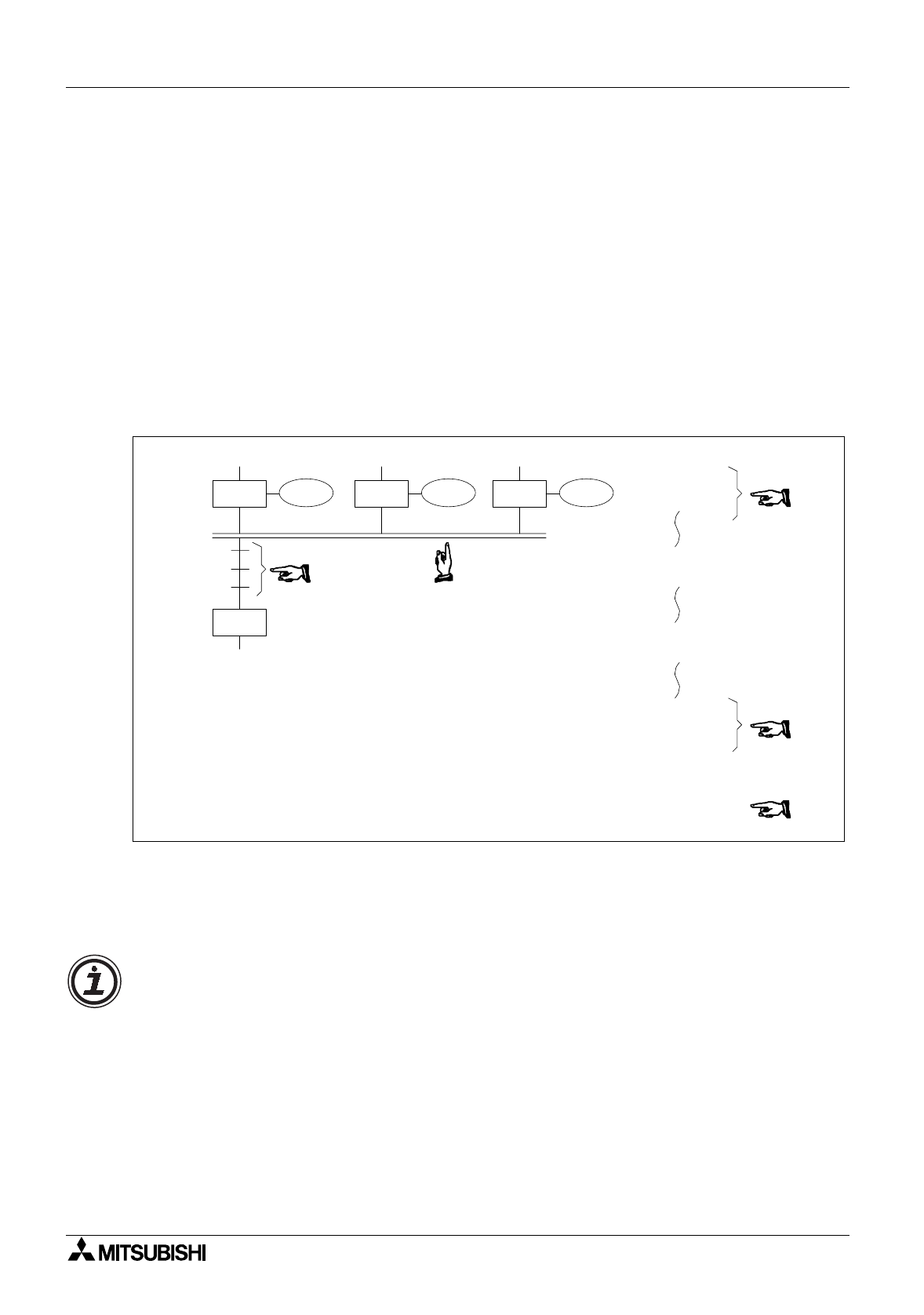
FX Series Programmable Controllers STL Programming 3
3-13
When a
g
roup of branch flows are activated, the user will often either;
a) ‘Race’ each flow a
g
ainst its counter parts. The flow which completes fastest would then
activate a
j
oinin
g
function (“First State Mer
g
e” described in the previous section) OR
b) The STL flow will not continue until ALL branch flows have completed there tasks.
This is called a ‘Multiple State Mer
g
e”.
An explanation of Multiple State Mer
g
e now follows below.
In the example below, states S29, S39 and S49 must all be active. If the instruction list is
viewed it can be seen that each of the states has its own operatin
g
/processin
g
instructions but
that also additional STL instructions have been linked to
g
ether (in a similar concept as the
basic AND instruction). Before state S50 can be activated the tri
gg
er conditions must also be
active, in this example these are X10, X11 and X12. Once all states and input conditions are
made the mer
g
in
g
or
j
oinin
g
state can be SET ON. As is the
g
eneral case, all of the states
used in the settin
g
procedure are reset automaticall
y
.
Because more than one state is bein
g
simultaneousl
y
j
oined with further states (some times
described as a parallel mer
g
e), a set of horizontal parallel lines are used to aid a quick visual
reco
g
nition.
Y10
S 29
S 39 S 49Y11 Y12
S 50
STL
OUT
S
Y
39
11
STL
OUT
S
Y
49
12
STL
OUT
S
Y
29
10
X10
X11
X12
STL
STL
STL
LD
AND
AND
SET
S
S
S
X
X
X
S
29
39
49
10
11
12
50
Limits on the number of branches
• Please see pa
g
e 3-14 for
g
eneral notes on pro
g
rammin
g
STL branches.
Notes on using the FX-PCS/AT-EE software
• Please see pa
g
e 3-15 for precautions when usin
g
the FX-PCS-AT/EE software.


















